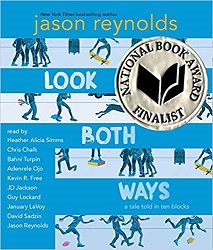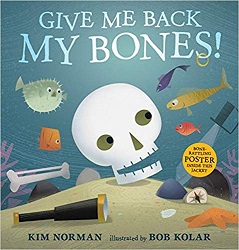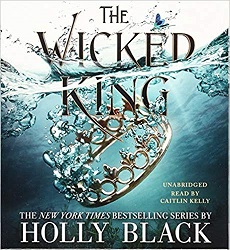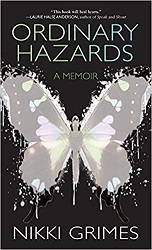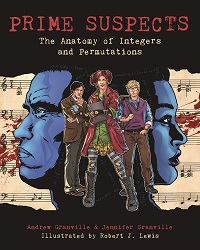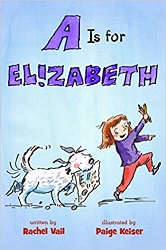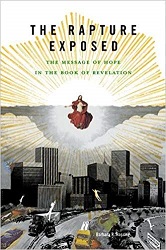 The Rapture Exposed
The Rapture Exposed
The Message of Hope in the Book of Revelation
by Barbara R. Rossing
Westview Press, 2004. 212 pages.
Starred Review
Reviewed November 16, 2019, from a library book
When I was only in elementary school and junior high, I was already an expert on the End Times. That is, the End Times as defined by dispensationalists. (Dispensationalists believe that God deals with humans in different ways during different time periods or dispensations.) The church my family attended had a chart on the wall in the library where my Sunday School class met showing all the dispensations of human history, including the Church Age (when we are now), the Rapture, the Great Tribulation, the Millennium, the Second Coming, and the New Heaven and New Earth. It was all charted out in that order. Many books were being published about biblical prophecy, including Hal Lindsey’s The Late Great Planet Earth. My family purchased many of them, and I read them, fascinated. Our church held some conferences on biblical prophecy where some of the authors spoke. I read Tim LaHaye’s books on the End Times a couple decades before he ever became a best-selling author with the Left Behind novel series.
When I got to college, I attended a Christian university. As it happened, I took a class on “The Church and Last Things” at the same time I was memorizing the Book of Revelation. I couldn’t help but notice that the Book of Revelation has no chart. And that the things I’d been taught might be something of a stretch to actually find in the Bible.
I’d already noticed that when Jesus came the first time, he did not meet the expectations of religious leaders. I have a feeling that prophecy isn’t usually given so we’ll be able to predict the future, but more so that we’ll be able to recognize God’s hand when He moves. I also noticed that Revelation is about telling us who’s going to win. Almost every chapter has a significant section of praise to God.
Things certainly don’t seem to be strictly chronological in Revelation. And a lot of the imagery to me doesn’t seem to quite fit what I was told it represented. When I did read the first several Left Behind books, I thought it was silly how they took some things literally – like locusts with human faces – and others figuratively.
I also clearly disagreed with some theology in the books, but I still had pretty ingrained in me that Revelation would happen basically the way they predicted. I am thankful to this book for showing me another way to look at Revelation, and a way that makes more sense and to me seems to follow more easily from what you read.
Now, I did know from my class at Biola University that not all Christians believe in a “pre-tribulation rapture.” But almost everything I’d read about end times – except the Bible itself – was from that perspective. Barbara Rossing begins her book this way:
The rapture is a racket. Whether prescribing a violent script for Israel or survivalism in the United States, this theology distorts God’s vision for the world. In place of healing, the Rapture proclaims escape. In place of Jesus’ blessing of peacemakers, the Rapture voyeuristically glorifies violence and war. In place of Revelation’s vision of the Lamb’s vulnerable self-giving love, the Rapture celebrates the lion-like wrath of the Lamb. This theology is not biblical. We are not Raptured off the earth, nor is God. No, God has come to live in the world through Jesus. God created the world, God loves the world, and God will never leave the world behind!
Most of this book is about going through the book of Revelation and looking at the things it actually tells us, but the author begins by giving us the history of the idea of the “Rapture.” She explains that it began about two hundred years ago when a girl in Scotland had a vision that the second coming of Jesus Christ would happen in two stages. The word “Rapture” does not occur in Scripture, but comes from the Latin word raptio, a translation of the Greek word for “caught up” from I Thessalonians 4:17 about what will happen when Jesus returns. But the two-stage return idea was new, and the idea of dispensations was developed to make it fit.
Dispensationalists admit that they pull things together from different parts of the Bible to make their teachings and their charts. Even the idea of seven years of tribulation has to be pieced together within the book of Revelation.
So you can read all this – where the Rapture came from and how the whole theory is pieced together, and it’s all very interesting, sounding much less coherent than when I read the theories from the authors themselves when I was a child.
But what I especially love about this book is the way she looks at Revelation and helps me to look at it with new eyes. She talks about how Revelation fit with other apocalyptic writings of the time and followed a similar format. Here’s an overarching view of the message of the book:
In the first of his apocalyptic journeys (Rev 4-5) John travels up to heaven. There he sees a beautiful vision of God’s throne, revealed to be the true power behind the universe. Angels and animals are worshiping God and singing songs of praise to Jesus, the Lamb. Revelation’s subsequent visions pull back the curtain to “unveil” the Roman empire for what it really is: Rome is not the great eternal power it claims to be, but a demonic beast that oppresses the world. God’s people must undertake a spiritual exodus out of the empire, led by the Lamb. God threatens evil Babylon/Rome with plagues like the plagues of the Exodus story. We must not put our trust in Roman security or power, nor that of any other empire. We are to give allegiance to God alone.
She reminds us of how the book came across to its original recipients:
Revelation was originally written for those whom South African theologian Allan Boesak calls “God’s little people” – communities of people who struggled under oppression – not for people with access to airplanes or money or the latest technology. The best way to understand Revelation’s message for today is to put ourselves in the place of the audience for whom it was originally written. Imagine Revelation as a message from the underside, written to comfort beleaguered churches struggling under Roman imperial violence and power. Revelation has spoken powerfully to oppressed people throughout history. Its voice of protest is heard in spirituals as well as gospel songs and hymns.
I do love that she points out something that struck me hard when I memorized the book of Revelation: the book is packed with praise.
Revelation is full of songs – heavenly choruses praising God and encouraging us to sing in the midst of tribulation. Just when the book begins to sound hopeless or despairing, a host of witnesses in heaven break into song. Even animals join the Lamb’s chorus, singing along with a cacophony of “every creature in heaven and on earth and under the earth and in the sea.” No other book of the Bible has shaped Christian hymns and music as much as Revelation, from Handel’s “Hallelujah Chorus” to “When the Saints Go Marching In,” to the “Battle Hymn of the Republic,” African American spirituals, and even reggae (“Let’s get together to fight this Holy Armageddon,” from Bob Marley’s “One Love”). Revelation’s songs are not intended to be literalistic. Indeed, the metaphorical dimension is precisely what gives Revelation’s songs their power. Songs connect us to something deeper: they evoke our capacity for solidarity and resistance, they give us hope.
Or as she puts it later:
Singing and worship are central to Revelation, a fact often overlooked by people who see the book only as a system of end-times predictions and timetables. In Revelation we sing our way into God’s new vision for our world, more than in any other book of the Bible.
The author urges us to relish the metaphors of Revelation:
Revelation’s world of vision is like that of a Magic Eye picture. It is an “Aha” kind of vision that draws us in to see the deeper picture. God invites us to let go of the flat page, to stop trying to figure out each literal detail of Revelation, and instead to enter further into the larger picture. As we read and meditate on the images of Revelation, we find whole new levels of God’s vision for our world unveiled to us: We taste water that is not just water – it is living water, the river of life. We follow Jesus, the shepherding Lamb, who invites us to drink from springs of that living water. We hear God’s lament for our world that is oppressed, and we witness the trial and judgment of oppressors in a suspense-filled courtroom. Finally, most wonderfully, we see God coming to earth to live with us in a beloved city – to wipe away all the world’s tears.
But I especially love the chapter called “Lamb Power,” where Barbara Rossing explains the subversive heart of the book of Revelation. She points out that just when you expect Rome’s images of power and victory is when the Lamb comes out.
Seated on the throne in heaven, God holds a scroll sealed shut with seven seals that must be opened. But who is worthy to open this scroll? God’s voice from the throne tells John in chapter 5, “Do not weep, for the lion of the tribe of Judah, the Root of David, has conquered so that he can open the scroll and its seven seals.” Two words in this admonition – “lion” and “conquer” (nike in Greek) – lead us to expect that a fierce animal will appear to open the scroll with its claws, like the conquering lions in gladiatorial spectacles. A lion would be typical for an apocalypse; such fierce animals are often introduced to advance the plot. In Second Esdras, for example, the Messiah is portrayed as a roaring lion prophesying judgment against the Roman eagle and its violence.
But Revelation pulls an amazing surprise. In place of the lion that we expect, comes a Lamb: “Then I saw between the throne and the four living creatures and among the elders a Lamb standing as if it had been slaughtered” (Rev 5:6). It is a complete reversal. Actually the Greek word John uses is not just “lamb,” but the diminutive form, a word like “lambkin,” “lamby,” or “little lamb” (arnion in Greek) – “Fluffy,” as Pastor Daniel Erlander calls it. The only other place this word arnion is used in the New Testament is where Jesus says he is sending his disciples out into the world “as lambs among wolves” (Luke 10:3). No other apocalypse ever pictures the divine hero as a Lamb – Revelation is unique among apocalyptic writings in this image. The depiction of Jesus as a Lamb shows him in the most vulnerable way possible, as a victim who is slaughtered by standing – that is, crucified but risen to life.
Reminiscent of the servant-lamb of Isaiah 53, who “is led to the slaughter, and like a sheep to the shearer is silent,” the Lamb of Revelation became the victor not by militaristic power and slaughter but rather by being slaughtered. From beginning to end, Revelation’s vision of the Lamb teaches a “theology of the cross,” of God’s power made manifest in weakness, similar to Paul’s theology of the cross in First Corinthians. Lamb theology is the whole message of Revelation. Evil is defeated not by overwhelming force or violence but by the Lamb’s suffering love on the cross. The victim becomes the victor.
Lamb theology is what true victory or true nike is. For we, too, are “victors” or followers of the Lamb on whom the term nike or conquering is bestowed. This is one of the amazing features of the book. Much of Revelation can sound so violent, but we have to look at the subversive heart of the book — the redefinition of victory and “conquering” — to understand how Revelation subverts violence itself. Just like the Lamb, God’s people are called to conquer not by fighting but by remaining faithful, by testifying to God’s victory in self-giving love.
Another point that I love comes when the author talks about the centrality of the final two chapters of Revelation – chapters that dispensationalists gloss over as for a far distant day.
Contrary to the dispensationalist view, there is no rapture in the story of Revelation, no snatching of people off the earth up to heaven. Look at it this way: it is God who is raptured down to earth to take up residence and dwell with us – a rapture in reverse….
The word “dwell” in Revelation [21] is the same word as used to describe Jesus’ coming to earth in the Gospel of John, “the Word became flesh and dwelt among us.” The whole message of the Bible is that God loves the world so much that God comes to earth to dwell with us. The Gospel of Matthew calls Jesus “Emmanuel,” which means in Hebrew “God is with us.” Revelation proclaims that same message of God’s dwelling in our world. It is the message that God’s home is no longer up in heaven, but here in our midst, incarnate on earth. In Revelation 21-22 God’s throne moves down out of heaven, where it was in chapter 4, and is now located in the midst of the city – in the city descended down out of heaven, down to earth.
There’s lots more in this book. I highly recommend it. I admit that I am still will freak out if someone suggests everyone get a chip embedded in their right hand or on their forehead in order to buy and sell. But for the most part, this has enabled me to look at revelation with eyes of hope instead of fear and terror.
The hope of Revelation centers around the slain-yet-standing Lamb who has conquered – and around everything that that Lamb represents in God’s vision for us and for the world. The Lamb who replaces the expected lion in Revelation’s storyline continues to dwell with us and to overturn all the structures of war and injustice. In the face of empire, Revelation teaches us a way of life that is “Lamb power” – the power of nonviolent love to change the world. The hope of Revleation is simply this: that the Lamb has conquered the beast and that a wondrous river of life now flows out from the Lamb’s throne to bring healing water to every corner of our wounded world.
I also appreciate how she leaves us in the Epilogue:
To read the Bible’s hardest passages is like wrestling with God, much like Jacob who wrestled through the night at the river Jabbok. You grapple to make sense of the words, you hold on, you struggle for clarity, you seek to wrest answers for all your questions. What God gives you instead of a system of answers is a blessing, a new name — a living relationship. You are forever changed by the encounter. You have seen the face of God.
westviewpress.com
Buy from Amazon.com
Find this review on Sonderbooks at: www.sonderbooks.com/Nonfiction/rapture_exposed.html
Disclosure: I am an Amazon Affiliate, and will earn a small percentage if you order a book on Amazon after clicking through from my site.
Source: This review is based on a library book from Fairfax County Public Library.
Disclaimer: I am a professional librarian, but I maintain my website and blogs on my own time. The views expressed are solely my own, and in no way represent the official views of my employer or of any committee or group of which I am part.
What did you think of this book?
